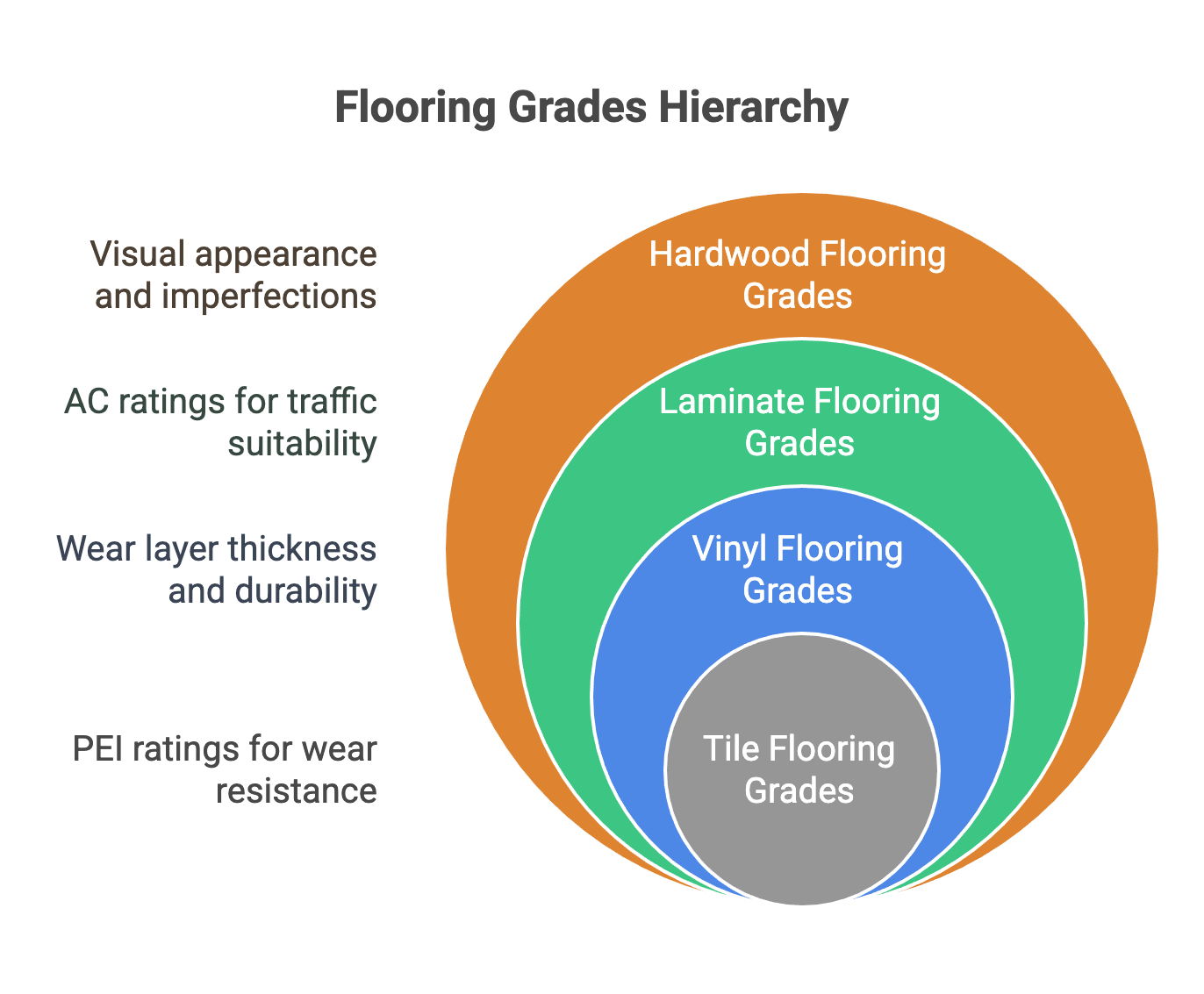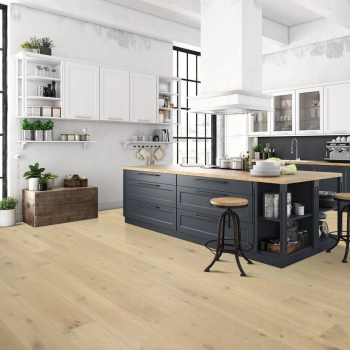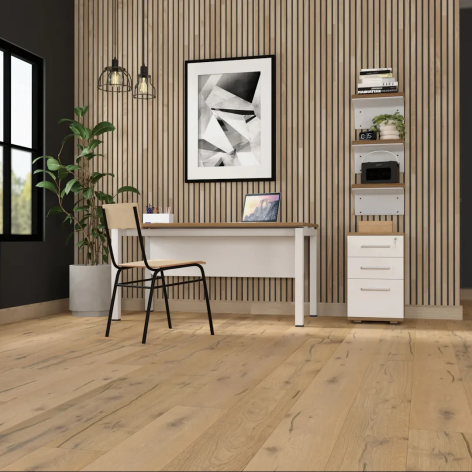When it comes to choosing flooring for your home, you shouldn’t overlook flooring grades. Flooring grades indicate the quality, durability, and aesthetic characteristics of the material you’re considering. Whether you’re installing hardwood, laminate, vinyl, or tile, knowing the different grades can help you find flooring that suits your needs. Let’s break down what flooring grades mean, and why understanding them can help you pick the perfect option for your home.
What Are Flooring Grades?
Flooring grades are used to categorize flooring materials based on their quality, durability, and visual appeal. Different types of flooring, such as hardwood, laminate, vinyl, and tile, each have specific grading systems. These grades help guide your purchase by letting you know what to expect from your flooring in terms of strength, look, and overall performance.
For example:
- Hardwood grades are based on appearance, focusing on color consistency, grain patterns, and knots.
- Laminate flooring grades (often labeled with AC ratings) are based on the durability and wear resistance of the material.
- Vinyl grades often reflect the thickness of the wear layer, indicating the material’s resistance to damage.
- Tile flooring grades (using PEI ratings) assess the tile’s ability to handle foot traffic and wear over time.
Knowing these grades helps you decide what’s important to your space. It could be aesthetic appeal, long-lasting durability, or both.
Common Flooring Grades: Understanding What They Mean
Each flooring type has its own grading system, which tells you how the flooring will perform in your home. Let’s learn how flooring grades apply to different materials:

Hardwood Flooring Grades
Hardwood flooring has different grades that reflect its visual appearance. The main hardwood flooring grades include:
- Select Grade: This grade features a clean, uniform look with few imperfections. It offers a pristine, luxurious finish in high-traffic areas like living rooms or dining rooms.
- Natural Grade: With a bit more character, this grade includes natural variations, such as minor knots or slight color differences, balancing refinement and charm.
- Rustic Grade: Known for its abundance of visible knots, rough grain patterns, and varying colors, rustic grade hardwood creates a casual, homey atmosphere. It’s durable and showcases character, which is ideal for kitchens or hallways.
Laminate Flooring Grades
Laminate flooring uses AC (Abrasion Criteria) ratings to measure durability. Higher numbers signifying tougher, more wear-resistant surfaces. Here’s how it breaks down:
- AC1: Light traffic, such as in bedrooms or closets.
- AC2: Moderate residential use, like living rooms or dining rooms.
- AC3: Ideal for high-traffic residential spaces or light commercial use.
- AC4: Medium commercial use, perfect for small offices or shops.
- AC5: Heavy commercial use, ideal for high-traffic areas like stores or restaurants.
Vinyl Flooring Grades
The wear layer of vinyl determines its grade. Vinyl is graded based on its thickness and ability to withstand scratches and stains.
- 6-12 mil Wear Layer: Ideal for low-traffic spaces like bedrooms or guest rooms.
- 12-20 mil Wear Layer: Suitable for moderate to high-traffic areas like living rooms and kitchens.
- 20+ mil Wear Layer: Best for high-traffic areas, offering the highest protection for homes with pets and kids.
Tile Flooring Grades
Tile grades, indicated by PEI ratings, tell you how resistant the tile is to wear and tear. The higher the number, the more resilient it is to high traffic.
- Grade 1: Suitable only for walls.
- Grade 2: Ideal for residential bathrooms with light foot traffic.
- Grade 3: Works for most residential spaces like kitchens and living rooms.
- Grade 4: Suitable for entryways or small commercial spaces.
- Grade 5: Perfect for high-traffic commercial environments like restaurants or malls.
How Flooring Grades Affect Price and Quality
Higher flooring grades often cost more, but offer more long-term benefits. Here’s a breakdown of how flooring grades impact both quality and cost:
- Higher grades offer better durability and fewer imperfections in the material, which is ideal for high-traffic areas or when aesthetics are a priority. They typically last longer and require less maintenance.
- Mid-range grades offer a balance between cost and quality, providing durability and appealing aesthetics for most residential spaces.
- Lower grades are more budget-friendly but might show wear and tear quicker. They are perfect for low-traffic spaces or temporary solutions.
How to Choose the Right Flooring Grade
Choosing the right flooring grade depends on your needs, budget, and the specific area you’re flooring. Here’s a quick guide to help:
- For High-Traffic Areas: Go for higher-grade materials like 20+ mil vinyl, AC3 laminate, or Grade 5 tiles for long-lasting durability.
- For Low-Traffic Areas: Choose mid-grade options like AC2 laminate or a 6-12 mil vinyl wear layer for a budget-friendly yet durable solution.
- Design Priorities: For a sleek look, select Select Grade hardwood or high-grade tiles. For more character, consider Rustic Grade hardwood or Natural Grade hardwood.
- Special Conditions: For moisture-prone areas like bathrooms, opt for waterproof options like high-grade vinyl or Grade 4-5 tiles.
- Homes with Pets or Kids: Go for scratch-resistant materials like AC3 laminate or high-wear vinyl for better protection against damage.
Find Quality Flooring Today
Now that you understand flooring grades, you can confidently choose the right material for your space. Whether you prefer Select Grade hardwood, 20+ mil vinyl, or Grade 5 tile, there’s a flooring grade for every home.
At Floor Inspirations, we help you choose the best flooring to fit your style and needs. Visit our showroom or schedule a consultation with our flooring experts today!



